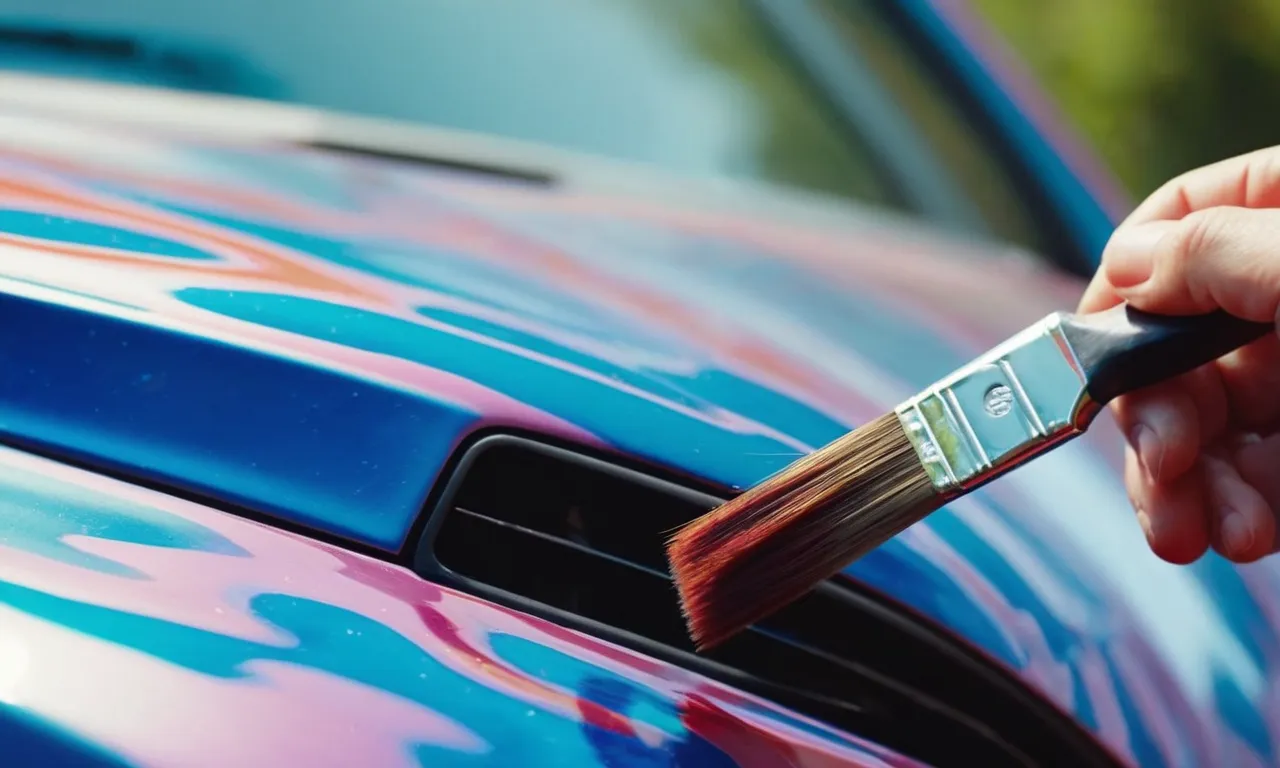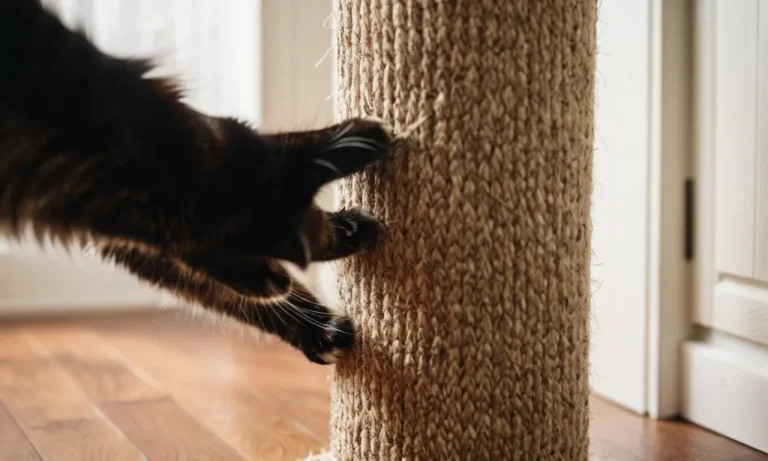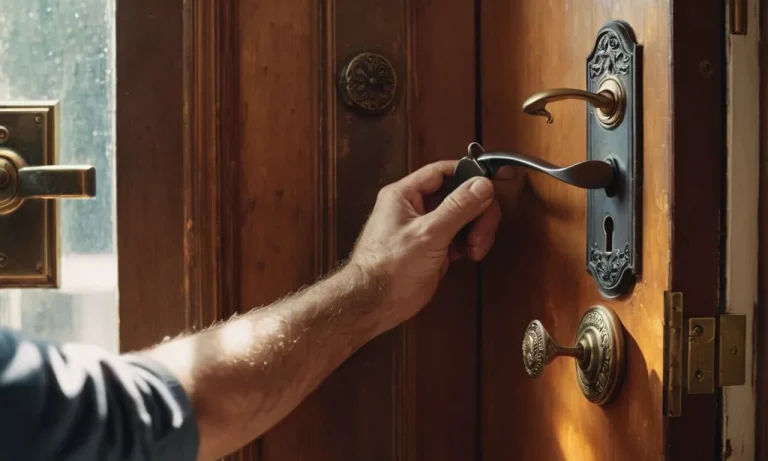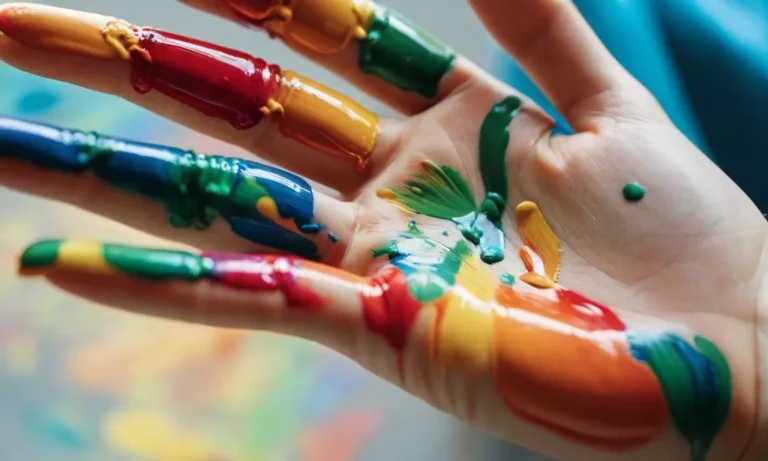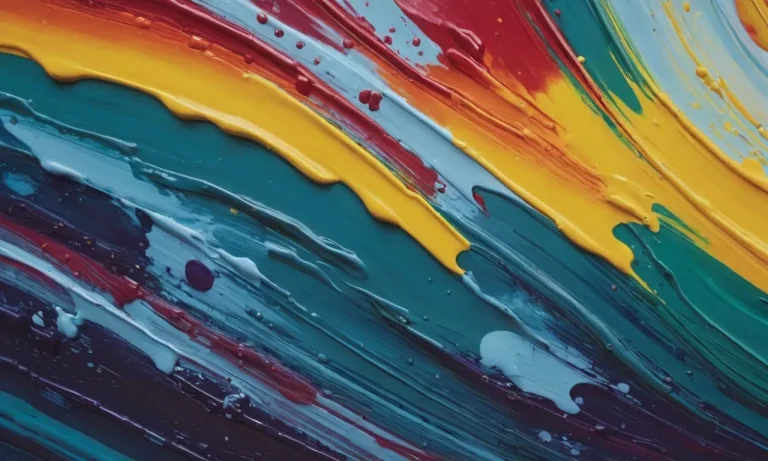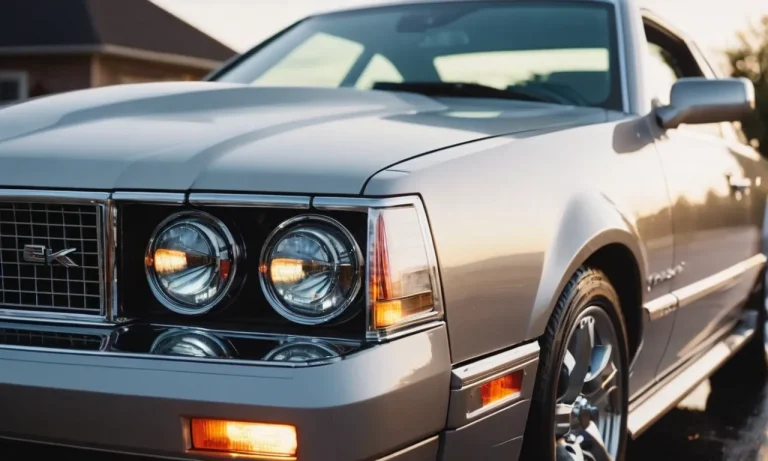How Much Paint Do You Need To Paint A Car? A Detailed Guide
Painting a car can seem daunting for a first-timer. With so many factors to consider, it’s natural to wonder just how much paint you’ll actually need for a smooth, professional-looking paint job. The answer depends on several key variables – from the size and condition of your car to the type of paint you choose.
In this comprehensive guide, we’ll walk you through step-by-step how to calculate exactly how much paint you need for a flawless DIY automotive paint job.
If you’re short on time, here’s a quick answer to your question: For most medium-sized sedans, you’ll need 1-3 gallons of paint for the exterior and 15-20 cans of spray paint for details like the engine bay and interior accents.
Determine the Size Class and Surface Area of Your Car
Before you can determine how much paint you need to paint your car, it’s important to determine the size class and surface area of your vehicle. This will help you estimate the amount of paint required for the job.
Measure Vehicle Length and Width
The first step is to measure the length and width of your car. Using a measuring tape, measure from the front bumper to the back bumper for the length, and from one side mirror to the other for the width. Make sure to measure the widest point of your vehicle to get an accurate measurement.
Pro tip: If you’re unsure about how to measure your car, you can refer to reliable automotive websites for detailed instructions and diagrams.
Factor in Other Surfaces Like Bumpers and Mirrors
It’s important to factor in other surfaces of your car that will require paint, such as bumpers and mirrors. These areas often have a different surface area compared to the main body of the car, so it’s essential to include them in your calculations.
Did you know? Bumpers and mirrors are usually made of plastic or fiberglass, which may require specialized paint and preparation techniques.
Consider the Surface Area of Door Jambs and the Engine Bay
Don’t forget to consider the surface area of door jambs and the engine bay when calculating the amount of paint needed. These areas may require additional paint to ensure a seamless finish.
Pro tip: When estimating the surface area, it’s always better to overestimate slightly to account for any touch-ups or repairs that may be needed.
By accurately determining the size class and surface area of your car, you’ll be able to calculate the amount of paint required for your painting project. This will help you avoid running out of paint or wasting excess.
Remember to consult professional resources and expert advice to ensure a successful paint job!
Account for the Condition of the Existing Paint and Body
Before you start calculating how much paint you need to paint a car, it’s important to assess the condition of the existing paint and body. This will help determine the amount of preparation work required before applying the new paint.
Assess Paint Damage, Chips, and Scratches
Inspect the car’s surface for any paint damage, such as chips and scratches. These imperfections will need to be repaired before painting. Minor chips and scratches can often be fixed with touch-up paint, while larger or deeper damage may require more extensive repairs.
It’s important to note that repairing paint damage can impact the amount of paint you will need. If you need to apply multiple coats to cover repaired areas, you may require more paint than initially estimated.
Check for Any Body Imperfections That Require Filler
Examine the body of the car for any imperfections, such as dents or dings, that require filling. These areas will need to be repaired and smoothed out before painting. Body filler, also known as bondo, is commonly used to fill in dents and provide a smooth surface for painting.
Keep in mind that body filler adds thickness to the surface, which can affect the amount of paint needed. Additionally, the size and number of imperfections will impact the quantity of filler required, which in turn affects the amount of paint needed.
Factor in Sanding and Priming Needs
Prior to painting, the car’s surface needs to be sanded and primed. Sanding helps to smooth out any rough areas and create a suitable surface for the paint to adhere to. Priming provides a base coat that enhances the paint’s durability and appearance.
Both sanding and priming processes may require additional materials such as sandpaper, primer, and other related supplies. These factors should be taken into account when calculating the overall quantity of paint needed for the car.
Remember, the condition of the existing paint and body plays a crucial role in determining how much paint you will need to paint a car. Taking the time to assess any damage, imperfections, and preparation requirements will ensure that you have an accurate estimate and sufficient paint to achieve the desired results.
Choose Your Paint Type and Finish
When it comes to painting a car, one of the most important decisions you’ll need to make is choosing the right paint type and finish. The paint you choose will not only determine the appearance of your vehicle but also its durability and longevity.
Here are some key factors to consider when selecting your paint type and finish.
Solvent vs. Water-Based Paint
One of the first decisions you’ll need to make is whether to use solvent-based or water-based paint. Solvent-based paints have been the traditional choice for car painting due to their excellent durability and resistance to fading.
However, they also contain high levels of volatile organic compounds (VOCs), which can be harmful to both human health and the environment. On the other hand, water-based paints have gained popularity in recent years due to their lower VOC content and eco-friendliness.
They are also easier to clean up and have less odor. Ultimately, the choice between solvent-based and water-based paint will depend on your priorities and local regulations.
Metallic, Pearl, and Solid Color Options
Once you’ve decided on the paint type, you’ll need to choose the color and finish for your car. There are three main options to consider: metallic, pearl, and solid colors. Metallic paints contain small metallic flakes that create a shimmering effect, adding depth and dimension to your car’s appearance.
Pearl paints, on the other hand, have a translucent quality that gives off a pearly sheen. Solid colors are non-metallic and offer a classic, uniform look. The choice between these options will depend on your personal preference and the overall style you want to achieve with your car.
High-Gloss vs. Satin vs. Matte Finishes
Another important aspect to consider is the finish of your paint. High-gloss finishes are glossy and reflective, giving your car a sleek and polished appearance. They are popular for sports cars and luxury vehicles.
Satin finishes, on the other hand, have a subtle sheen that falls between high-gloss and matte. They offer a more understated look that can still make your car stand out. Matte finishes, also known as flat finishes, have no shine at all and provide a unique and bold appearance.
They are often chosen by car enthusiasts looking for a more unconventional and eye-catching style. The choice of finish will depend on your personal taste and the overall aesthetic you want to achieve.
When choosing your paint type and finish, it’s important to consider not only your personal preferences but also the practical aspects of car painting. Researching and testing different options can help you make an informed decision that will result in a beautiful and long-lasting paint job for your car.
Understand Paint Coat Requirements
When it comes to painting a car, understanding the paint coat requirements is essential to achieve a professional and long-lasting finish. The paint coat typically consists of a primer, basecoat, and clearcoat, with additional coats sometimes required for metallic paints.
Most Jobs Require a Primer, Basecoat, and Clearcoat
Before applying the paint, it is crucial to prepare the surface properly. This involves sanding, cleaning, and applying a primer. The primer acts as a foundation for the paint, providing adhesion and ensuring a smooth finish. It also helps to prevent corrosion and rust.
Once the primer has been applied and allowed to dry, the next step is to apply the basecoat. The basecoat is the color layer of the paint and is responsible for giving the car its desired hue. Multiple coats may be necessary to achieve the desired color intensity.
Finally, a clearcoat is applied to protect the basecoat and give the car a glossy finish. The clearcoat acts as a shield against UV rays, chemicals, and general wear and tear. It also enhances the depth and shine of the paint job.
Note: The number of coats for each layer will depend on the specific paint manufacturer’s recommendations and the condition of the car’s surface.
Additional Coats May Be Needed for Metallic Paints
Metallic paints require special attention due to their unique properties. These paints contain tiny metallic particles that give them a shimmering effect. To achieve an even and vibrant finish, additional coats may be necessary.
The basecoat for metallic paints is usually applied in multiple layers to ensure an even distribution of the metallic particles. This helps to create a consistent appearance and avoid any patchy or streaky areas.
It is important to follow the manufacturer’s guidelines when applying metallic paint, as the number of coats and drying times may vary. Additionally, proper technique and equipment, such as a spray gun, can help achieve a flawless metallic finish.
Fun Fact: Did you know that metallic paints can change their appearance depending on the angle from which they are viewed? This effect, known as “flop,” adds depth and complexity to the paint job.
Calculate How Many Cans of Spray Paint for Details
Engine Bay
When it comes to painting the engine bay of your car, you’ll want to make sure you have enough cans of spray paint to cover the entire area. The engine bay is typically a larger surface area compared to other details, so it’s important to estimate the amount of paint needed accurately.
One way to calculate the number of cans required is by considering the square footage of the engine bay. Measure the length and width of the area and multiply these measurements to get the total square footage.
Refer to the instructions on the spray paint can to determine the coverage per square foot. Divide the total square footage by the coverage per can to find out how many cans you’ll need.
Door Jambs
Painting the door jambs is an important step to achieve a professional finish when painting your car. To determine the number of cans needed for the door jambs, start by measuring the width and height of each jamb.
Multiply these measurements to get the total square footage for all the door jambs combined. Again, refer to the coverage per can mentioned on the spray paint can instructions. Divide the total square footage by the coverage per can to find out how many cans you’ll need.
Keep in mind that you may require more paint if you plan to apply multiple coats for better coverage and durability.
Trunk
Painting the trunk of your car requires careful estimation of the amount of spray paint needed. Measure the length and width of the trunk’s surface area and multiply these measurements to get the total square footage.
Refer to the coverage per can mentioned on the spray paint can instructions and divide the total square footage by the coverage per can to determine the number of cans required. Consider any additional coats you may want to apply for a smoother and more even finish.
Badges and Interior Accents
When it comes to painting badges and interior accents, the surface area is usually relatively small compared to other parts of the car. However, it’s essential to have enough paint to ensure proper coverage and a seamless look.
Determine the surface area of the badges and interior accents by measuring their length and width. Multiply these measurements to get the total square footage. Refer to the coverage per can mentioned on the spray paint can instructions and divide the total square footage by the coverage per can to calculate the number of cans needed.
Remember to consider any extra coats you may want to apply to achieve the desired finish.
Remember, these calculations are estimates, and it’s always a good idea to have some extra cans of spray paint on hand, just in case. It’s better to have more than you need than to run out in the middle of a project.
Additionally, following the manufacturer’s instructions and recommendations for the specific spray paint you’re using is crucial for achieving the best results.
Determine How Much Paint to Buy
Painting a car can be a daunting task, but with the right amount of paint, you can achieve professional-looking results. To ensure you have enough paint for the job, follow these steps to determine how much paint you need to buy.
Check Paint Coverage on the Data Sheet
The first step is to check the paint coverage on the data sheet provided by the manufacturer. This information will give you an estimate of how much coverage you can expect from a specific amount of paint. The coverage will vary depending on the type and brand of paint you choose.
By referring to the data sheet, you can calculate the amount of paint required based on the surface area of your car.
For example, if the data sheet indicates that one gallon of paint covers 400 square feet, and your car has a total surface area of 800 square feet, you would need two gallons of paint to cover the entire car.
Factor in Overlap and Stripe Coats
When painting a car, it’s important to factor in overlap and stripe coats. Overlap refers to the portion of the previous paint coat that is covered by the next coat. Stripe coats, on the other hand, are additional thin layers of paint applied to ensure even coverage.
Typically, a 10% overlap and two stripe coats are recommended for a professional finish. This means that you should add an additional 10% to the total amount of paint calculated in the previous step.
Get 10-20% Extra as Contingency
Lastly, it’s always a good idea to get 10-20% extra paint as a contingency. This extra paint will come in handy in case of any mistakes, touch-ups, or if you need to paint additional parts of the car in the future.
It’s better to have more paint than you need than to run out in the middle of the project.
By following these steps and considering the factors mentioned, you can accurately determine how much paint you need to buy for your car painting project. Remember to always consult the manufacturer’s data sheet for specific information on paint coverage and consult with a professional if you have any doubts.
Conclusion
Painting a car involves careful planning, surface preparation and using the right painting materials. With some basic measurements, an assessment of your car’s current paint condition, and an understanding of the types of paint and finishes available, you can dial in a fairly accurate estimate of how much paint you’ll need.
Be sure to buy 10-20% extra paint than calculated to avoid running short. Follow the steps in this guide and you’ll buy just the right amount of paint for a smooth, professional-looking DIY paint job on your car.

